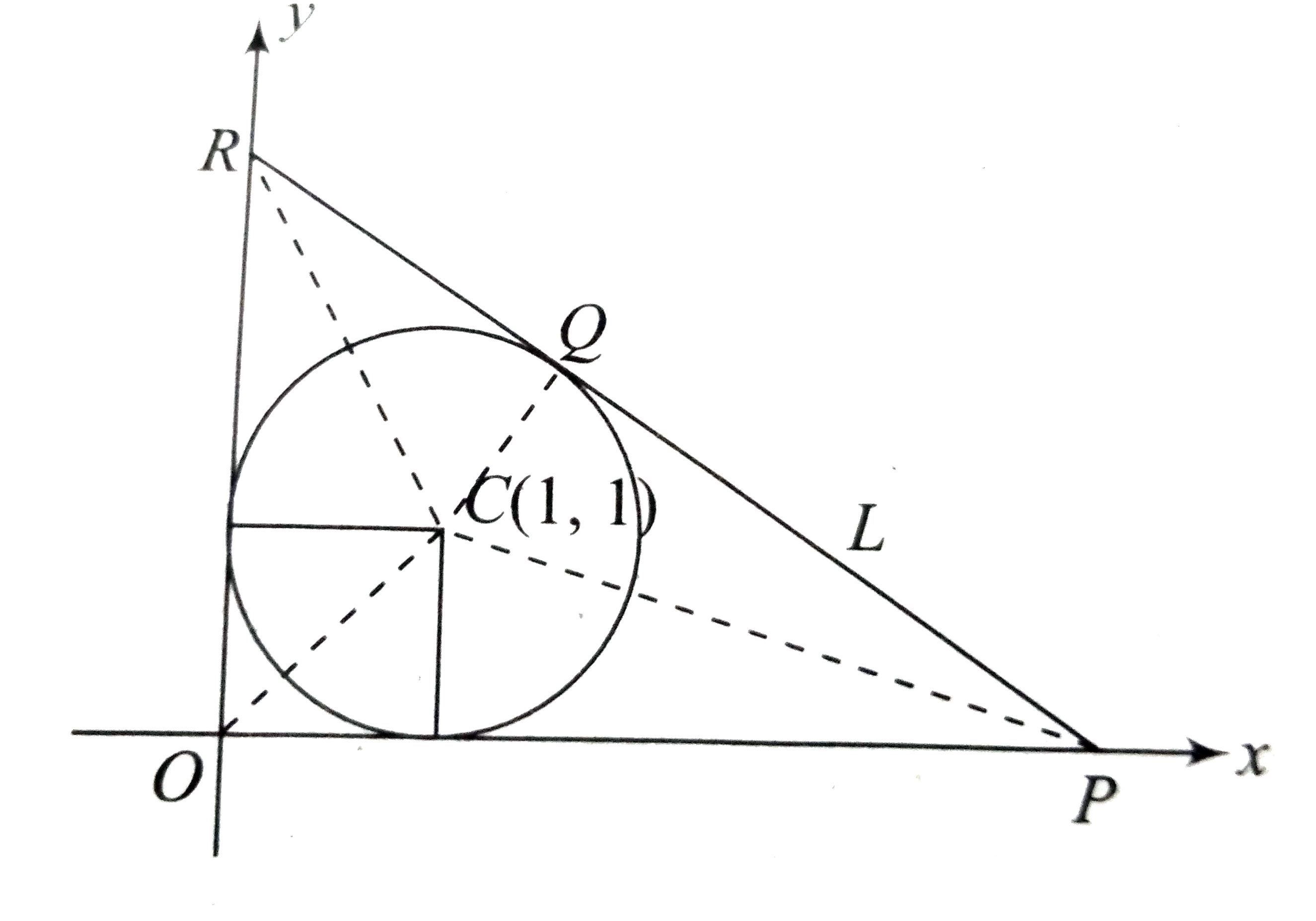If z1,z2,z3 are the vertices of an equilational triangle ABC such that |z1−i|=|z2−i|=|z3−i|, then |z1+z2+z3| equals to Solution in Bengali
3√3
√3
3
13√3
The correct Answer is:C
|z1−i|=|z2−p|=|z3−i|
Hence, z1,z2,z3 lie on the circle whose centre is I . Also given that the triangle is equilarteral. Hence, centroid and circumcentre conicides.
∴z1+z2+z33=i
⇒|z1+z2+z3|=3
Topper's Solved these Questions
- COMPLEX NUMBERSBook:CENGAGE PUBLICATIONChapter:COMPLEX NUMBERSExercise:MULTIPLE CORRECT ANSWERS TYPE
Explore 49 Videos
- COMPLEX NUMBERSBook:CENGAGE PUBLICATIONChapter:COMPLEX NUMBERSExercise:LINKED COMPREHENSION TYPE
Explore 36 Videos
- COMPLEX NUMBERSBook:CENGAGE PUBLICATIONChapter:COMPLEX NUMBERSExercise:EXERCISE3.11
Explore 6 Videos
- CIRCLESBook:CENGAGE PUBLICATIONChapter:CIRCLESExercise:Comprehension Type
Explore 8 Videos
- CONIC SECTIONSBook:CENGAGE PUBLICATIONChapter:CONIC SECTIONSExercise:All Questions
Explore 102 Videos
Similar Questions
If z=ω,ω2whereω is a non-real complex cube root of unity, are two vertices of an equilateral triangle in the Argand plane, then the third vertex may be represented by z=1 b. z=0 c. z=−2 d. z=−1
View SolutionIf ω is the complex cube root of unity, then find (1−ω+ω2)4
View SolutionIf a+(b+2a)i=1-4i, then find a and b.
View Solution
In the diagram as shown, a circle is drawn with centre C(1,1) and radius 1 and a line L. The line L is tangent to the circle at Q. Further L meets the y-axis at R and the x-axis at P in such a way that the angle OPQ equals θ where 0<θ<π2.
Coordinate of Q is
View SolutionGiven that A(1,1) and B(2,−3) are two points and D is a point on AB produced such that AD=3AB. Find the coordinates of D.
View SolutionThe complex number z_(1),z_(2) and z_(3) satisfying (z_(1)-z_(3))/(z_(2)-z_(3))=(1-i sqrt(3))/(2) are the vertices of a triangle which is :
View SolutionIf z_(1),z_(2),z_(3) are the vertices of triangle such that |z_(1)-i|=|z_(2)-i|=|z_(3)-i| and z_(1)+z_(2)=3i-z_(3) then area of triangle is
View SolutionIf z1,z2andz3 are the vertices of an equilateral triangle, then 1z1−z2+1z2−z3+1z3−z1=0
View SolutionIf z_(1)=iz_(2) and z_(1)-z_(3)=i(z_(3)-z_(2)), then prove that |z_(3)|=sqrt(2)|z_(1)|
View SolutionIf A(z1), B(z2), C(z3) are vertices of a triangle such that z3=z2−iz11−i and |z1|=3, |z2|=4 and |z2+iz1|=|z1|+|z2|, then area of triangle ABC is
View SolutionIf z1,z2,z3 are the vertices of an equilational triangle ABC such that |z1−i|=|z2−i|=|z3−i|, then |z1+z2+z3| equals to
View SolutionIf |z1|=|z2|=|z3| and z1+z2+z3=0, then z1,z2,z3 are vertices of
View SolutionThe complex numbers z1,z2,z3 stisfying (z2=z3)=(1+i)(z1−z3).wherei=√−1, are vertices of a triangle which is
View SolutionIf z_(1),z_(2),z_(3) represent the vertices of an equilateral triangle such that |z_(1)|=|z_(2)|=|z_(3)| , then
View Solutionz1,z2,z3 are vertices of a triangle ABC having area Δ satisfies (z3−z1)=(1−i√3)(z2−z1) and √3|z2−z3|2=kΔ then value of k2=
View SolutionIf |z1|=1,|z2|=2,|z3|=3 ,then |z1+z2+z3|2+|−z1+z2+z3|2+|z1−z2+z3|2+|z1+z2−z3|2 is equal to
View Solution